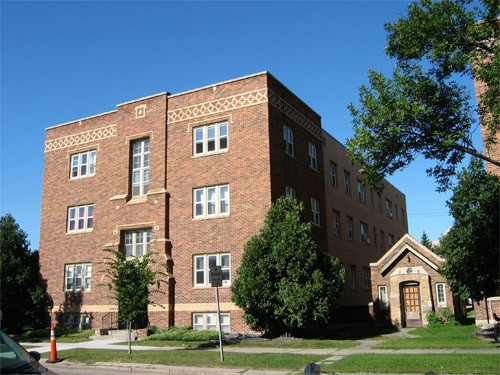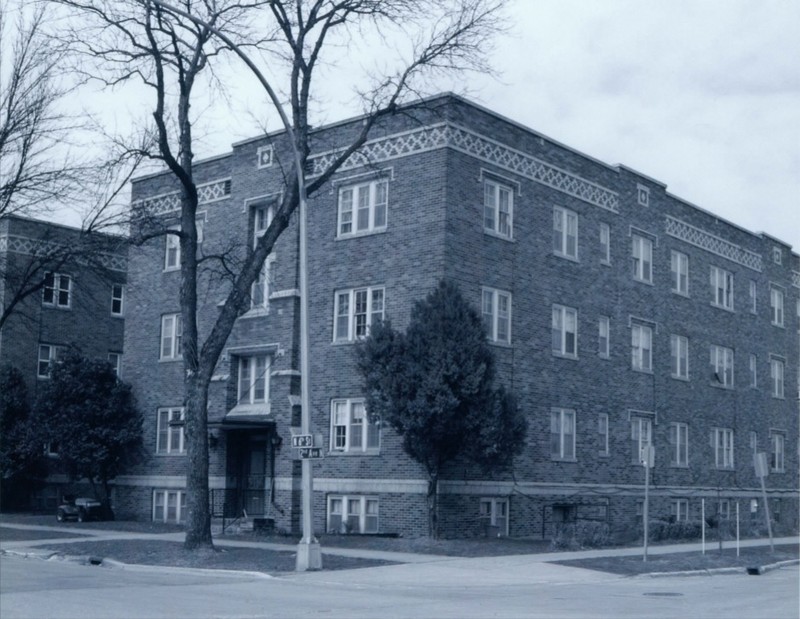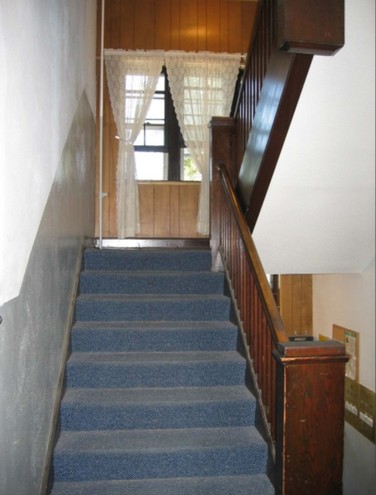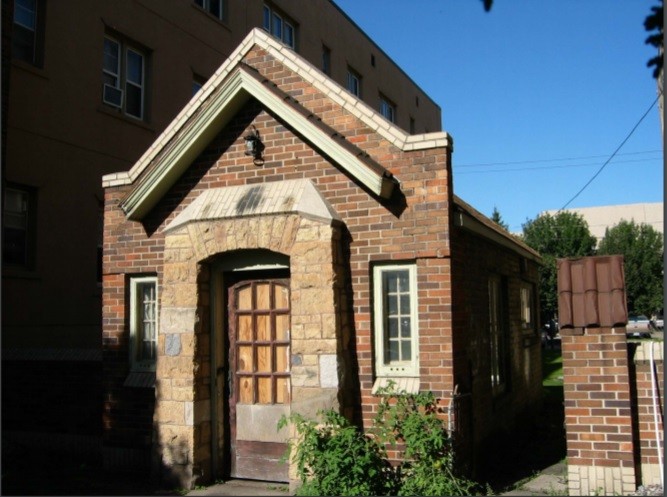Skarsbo Apartments
Introduction
Text-to-speech Audio
Images
The left building of the apartment complex.

A Black and white photo of the right building of the apartment complex.

The stairs inside showing a view of the original woodwork.

A picture of the caretaker's cottage.

Backstory and Context
Text-to-speech Audio
The population of Grand Forks went up by five thousand from the years of 1920 to 1925. This caused a need for housing for new educators for the university as well as railroad workers and people looking to take up the offer for free land around the area. Sixty-eight housing applications were approved to be built within 1928. With the stock market crash in October of 1929, the building boom halted. The Great Depression began and with a drought hitting the west side of North Dakota, people flocked to Grand Forks and Fargo to find any sort of work.
The apartment buildings are three stories tall and made out of red brick. They are rectangular are show English revival style, like most of the housing in Grand Forks built in the late 1920s did. In the building, the windows are original and are set in wood frames. This style was common around the downtown area of Grand Forks. Though most of the buildings have since disappeared, the few that remain show the popularity for the housing boom.
The designer of the Skarsbo apartments was Thomas B. Wells. Wells had established his architectural practice in the Grand Forks and northwestern Minnesota area in 1923. His styles were classical revival and Gothic revival that he kept emphasizing into the 1930s. After designing the building, Andrew T. Skarsbo and the Thorvaldsen-Johnson Co. actually built the apartment buildings. After finishing the build, Skarsbo went on to live in one of the apartments with his wife and family.
By looking at the Skarsbo Apartments, a general idea of the population boom and architectural style of buildings created in Grand Forks towards the end of the 1920s becomes clear. Designed as a classical revival by Thomas B. Wells and built by Andrew T. Skarsbo and the Thorvaldsen-Johnson Co., the building rests on 204 North Sixth St by downtown Grand Forks. A staple of apartment styling from the pre-Great Depression Era, both the buildings and the caretaker cottage in between are registered in the National Register of Historic Places.
Cite This Entry
Courtney Stevens and Cynthia Prescott. "Skarsbo Apartments ." Clio: Your Guide to History. April 30, 2019. Accessed April 28, 2025. https://theclio.com/tour/2456/8
Sources
Cromley, Elizabeth Collins. Alone Together: A History of New York’s Early Apartments. Ithaca: Cornell University Press, 1990.
McAlester, Virginia and Lee. A Field Guide to American Houses. New York, 1989.
Roberts, Norene and Joe D. “Historical Research Report.” Historical & Architectural Survey of Downtown Grand Forks, ND, Vol 1. 1981.
Sexton, R.W. American Apartment Houses of Today. New York, 1926.
Dennis, Michelle. “Skarsbo Apartments.” National Parks Service. 2011.

